In the beginning of 2011, my mom made travel plans to visit me during the Japanese university academic calendar spring vacation (from February to the end of March) and we started off by visiting the Kansai (Osaka, Kobe and Kyoto) region.
So what was it like to be in Japan during the 3/11 Disaster in the Kansai region in western Japan? Surprisingly normal.
The Fushimi Inari Shrine (伏見稲荷大社) that we visited in Kyoto on March 12, 2011.
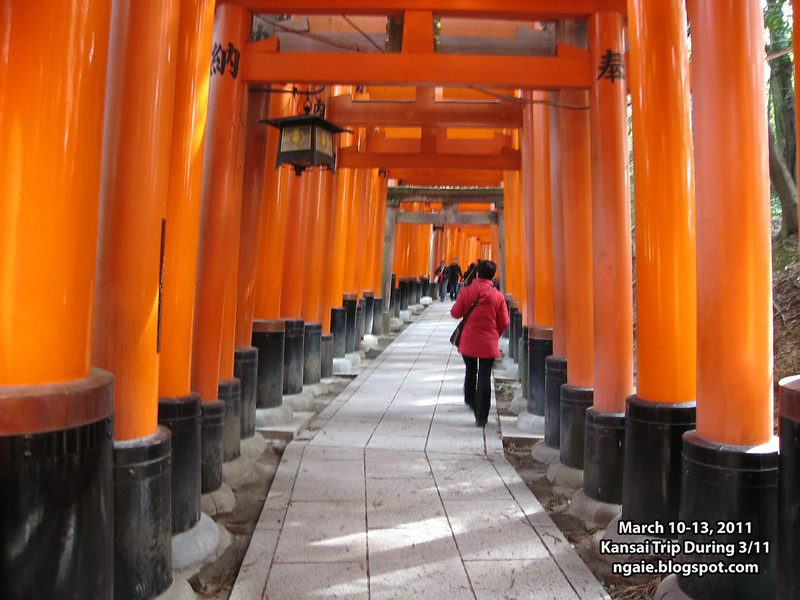
Location of the 3/11 disaster area, the crippled Fukushima Dai-ichi Nuclear Plant (blue marker), in relation to the rest of Japan.
View 2011-03 Kansai Trip During the 2011 3/11 Disaster in a larger map
I started the trip on March 10, 2011 by taking a bus from the inaka (rural area) of Hiroshima where my university (Hiroshima University) was located to Osaka to meet my mom who was flying in. Since there was no direct flight from Vancouver, Canada to Osaka, she had to transfer at Narita Airport and to board another flight to Itami Airport in Osaka. The flight was scheduled to arrive at night and since I had arrived in Osaka at around 12:00 pm, I decided to do a bit of exploring before picking up my mom at Itami Airport.
I went to the Namba area of Osaka and explored Namba Parks which I had read about in some architecture and design magazines. Although Namba Parks is just a office and commercial building, what sets it apart from other similar buildings is the incorporation of a sloping urban park on the roof of the building and built to resemble a natural canyon.
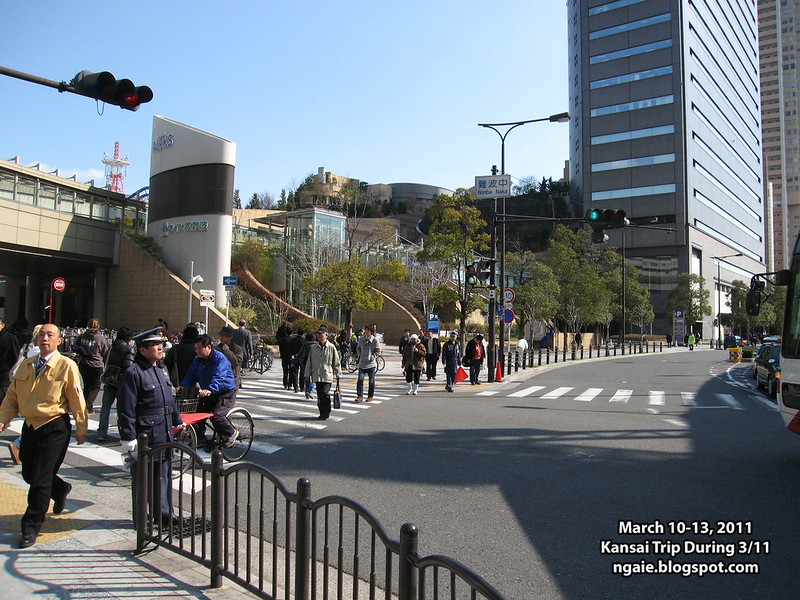
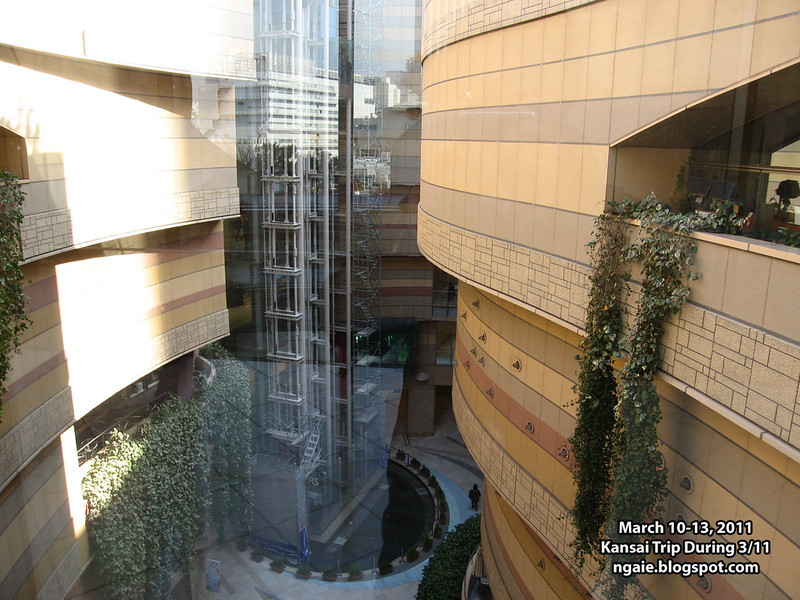

At the top level of Namba Parks. The giant building in front is the Swissotel at the Nankai Railway Namba terminal.
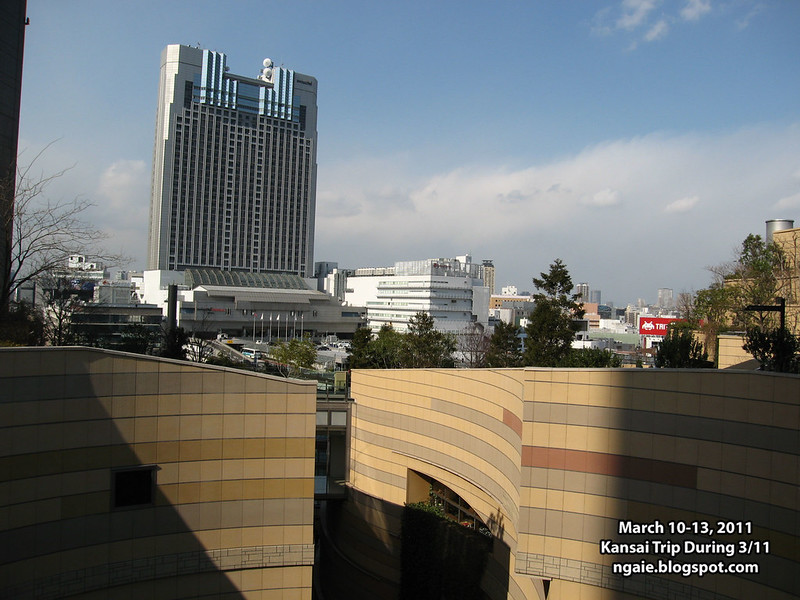


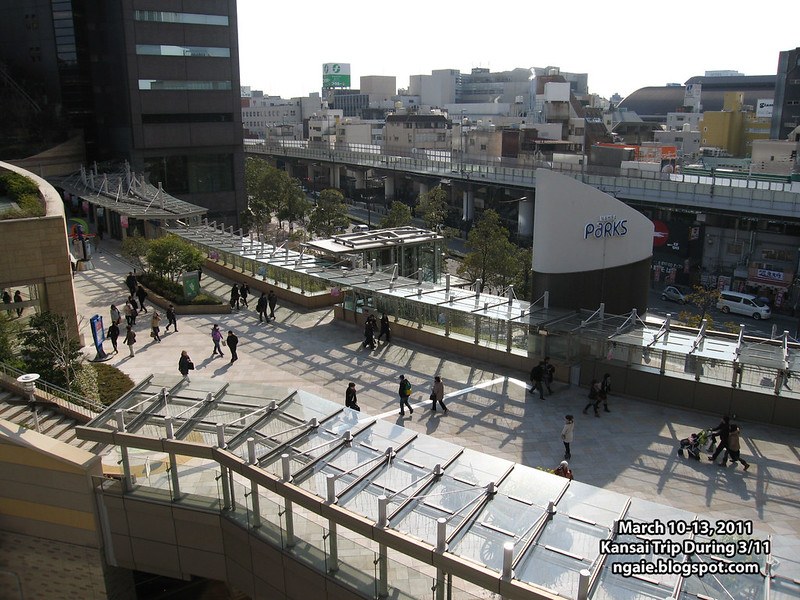
Since I had a lot of time before my mom's flight arrived, next I walked to the Umeda Sky Building from Umeda station. I had gone to the top during my first visit to Japan way back in 2004 and this time I just walked around the bottom. I remember it being very windy on that day!
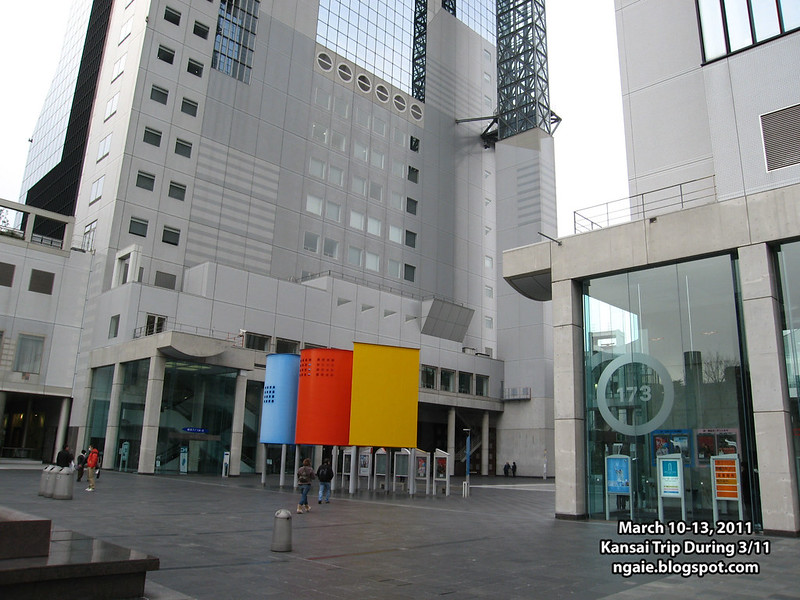
By this time, it was time to head to the Itami Airport or more formally known as Osaka International Airport. Before Kansai International Airport (which is located on an artificial island far away from Osaka) opened in 1994, this was the main international airport to Osaka. Now it just handles domestic flights. Compared to Kansai airport, Itami airport is very close to the centre of Osaka but because of all the transfers between monorail and train, the fare turns out to be quite expensive.
The nice thing about Japan's airports is that almost every airport has a public observation deck.
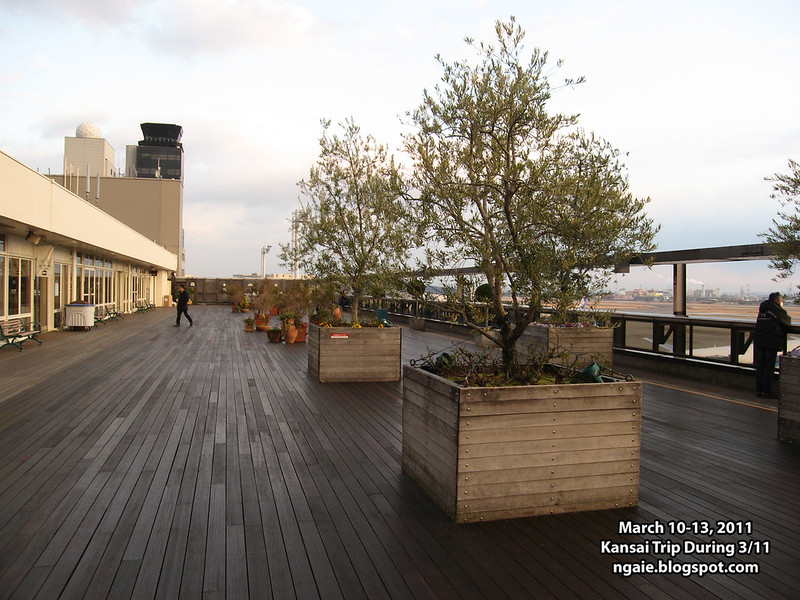
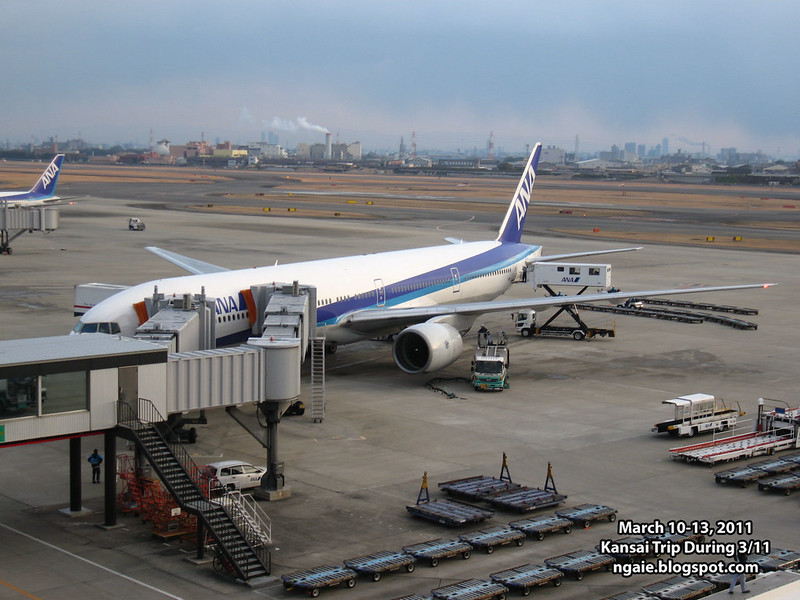
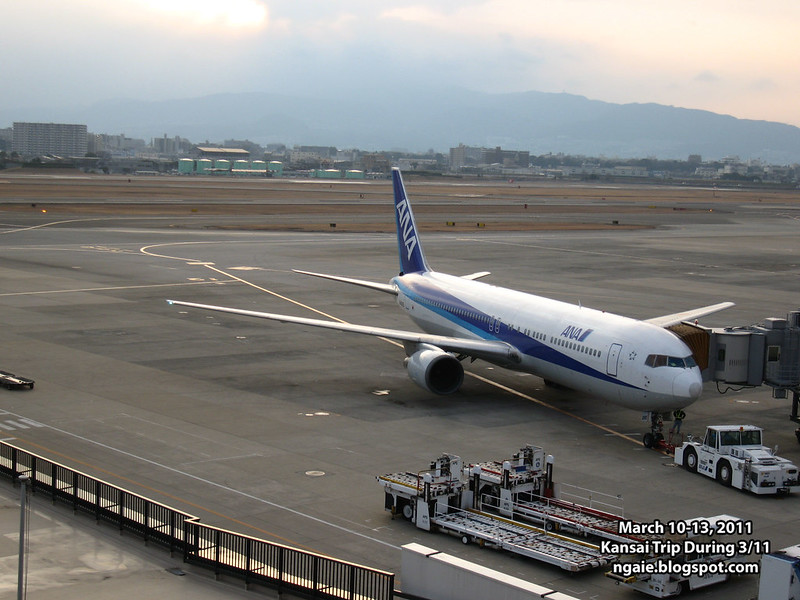
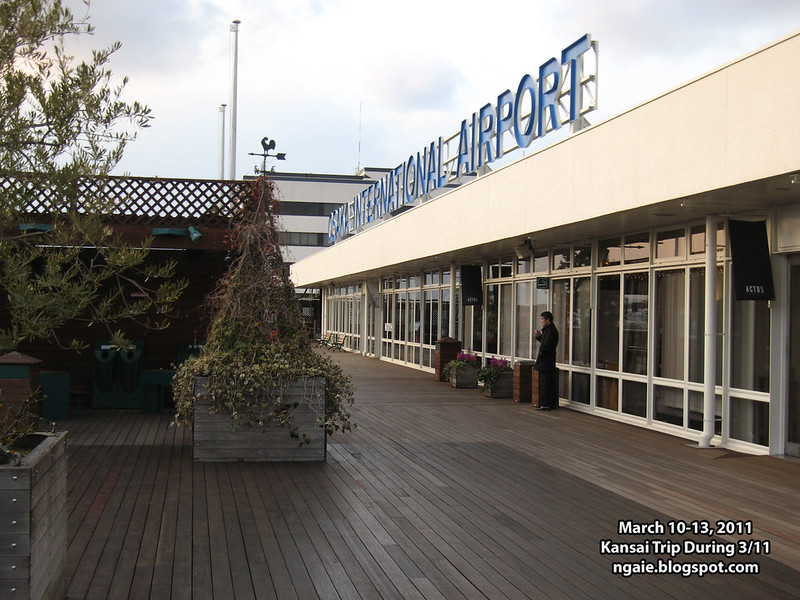




The arrival hall at Itami airport, old yet well maintained.

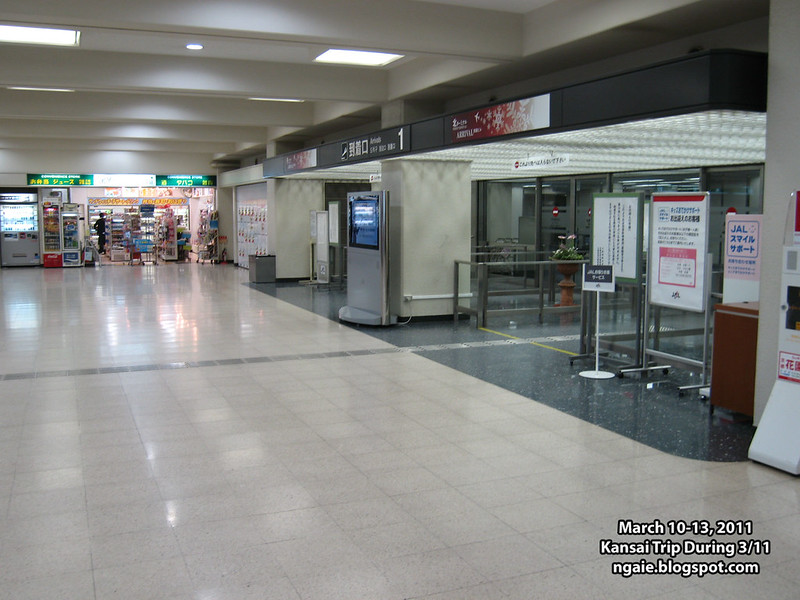
I did not know that my mom had brought two heavy suitcases (most of it was filled with foodstuffs for me ^-^) so it was a challenge to carry the suitcases to our hotel in the Namba area of Osaka that was not located near a major train station.
On the next day on March 11, 2011, we went around exploring Osaka, it felt like any ordinary day...
Since we were in Osaka, we wanted to try some of the food specialities of Osaka. One of the things famous in the Shinsekai area (新世界) area of Osaka is the kushi-katsu (串カツ) which are Japanese-style deep fried kebabs. I had previously visited the area by myself a couple of months earlier in the fall of 2010 but did not try any kushi-katsu because I was traveling by myself and eating kushi-katsu by yourself is just weird.
Therefore we had some kushi-katsu for lunch.
On the tables of every kushi-katsu restaurant, there were metal tins of containing some kind of sweet sauce that you were supposed to dip the kushi-katsu in before eating. In addition, to your order of skewers, they also gave you a plate of raw cabbage for you to eat with the fried skewers. The below photo, not taken by me, shows a typical kushi-katsu restaurant.

Also you were supposed to dip the raw cabbage with the sauce to eat. We did not finish our plate of raw cabbage.
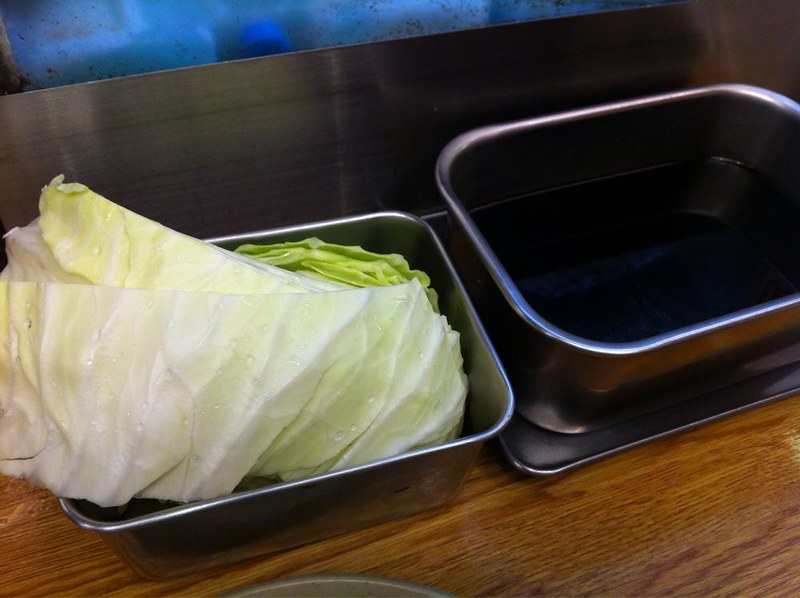
I also have to note that at this particular kushi-katsu restaurant that we went to, I experienced the worst service in a restaurant in Japan to date. It took them more than 30 minutes to fry the skewers we ordered and when we inquired why nothing was coming, it turned out they forgot to write down our order!
My mom in front of the Tsutenkaku Tower. The symbol of the Shinsekai area of Osaka.
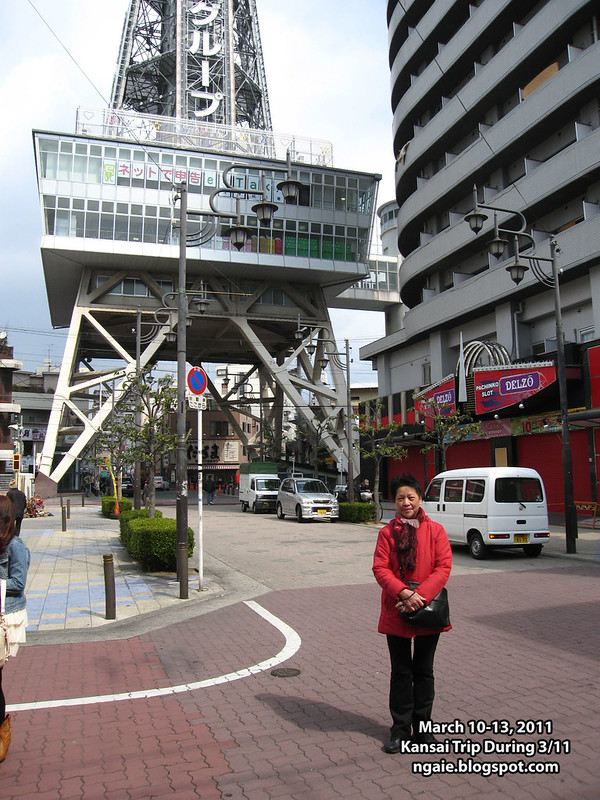
Next we went to the Shinsaibashi area to do some shopping and it was at the Uniqlo flagship store in Osaka that I learned of the 3/11 earthquake/tsunami/nuclear disaster in the Tohoku region of Japan.
While my mom was shopping for clothes in the store, suddenly, on my iPhone, I started to get emails and messages non-stop asking if I was alright. Since earthquakes in Japan are a common occurrence, I didn't think this earthquake was a big deal at the time and did not understand the magnitude of the disaster until later...
For the rest of the day in Osaka, things went on normally as usual, and that night, we had Osaka-style okonomiyaki (Japanese-style pancakes) at a well known restaurant called Chibo (千房). There are two major styles of okonomiyaki in Japan, the Osaka-style and Hiroshima-style, and personally, I prefer the Osaka-style more. The Hiroshima-style usually comes with noodles on the bottom which I find too filling when combined with all the batter used to make the okonomiyaki.
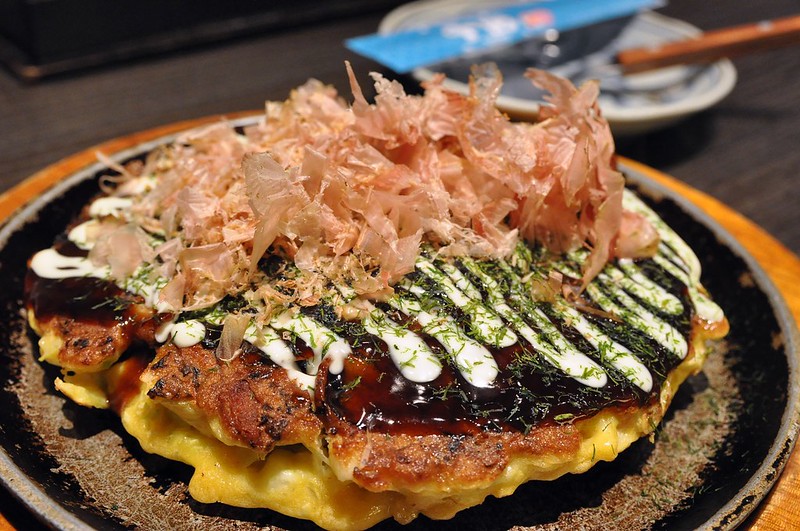
On the next day on March 12, 2011, we visited Kyoto and the first place we visited was the Fushimi Inari Shrine (伏見稲荷大社) in southern Kyoto which is famous for its thousands of torii gates.
As you can see, it was just another quiet day in Kyoto.
From the train station leading to the shrine.
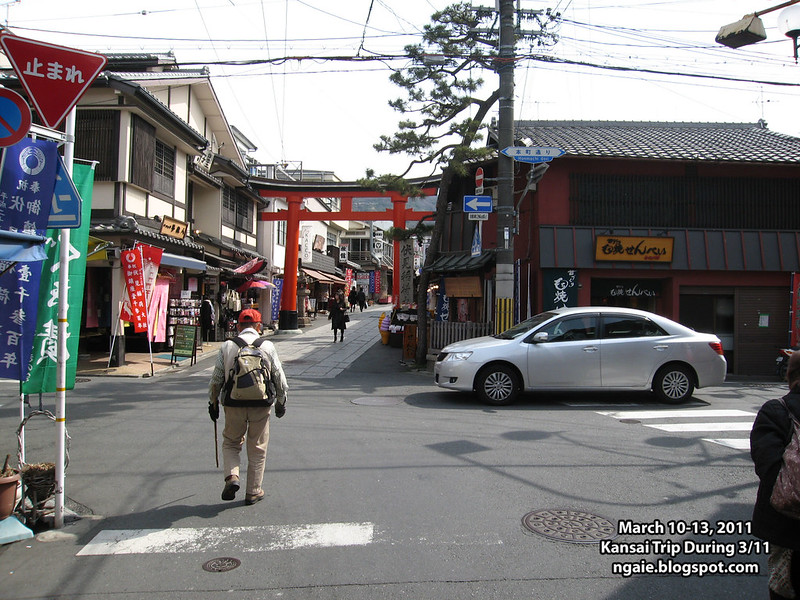
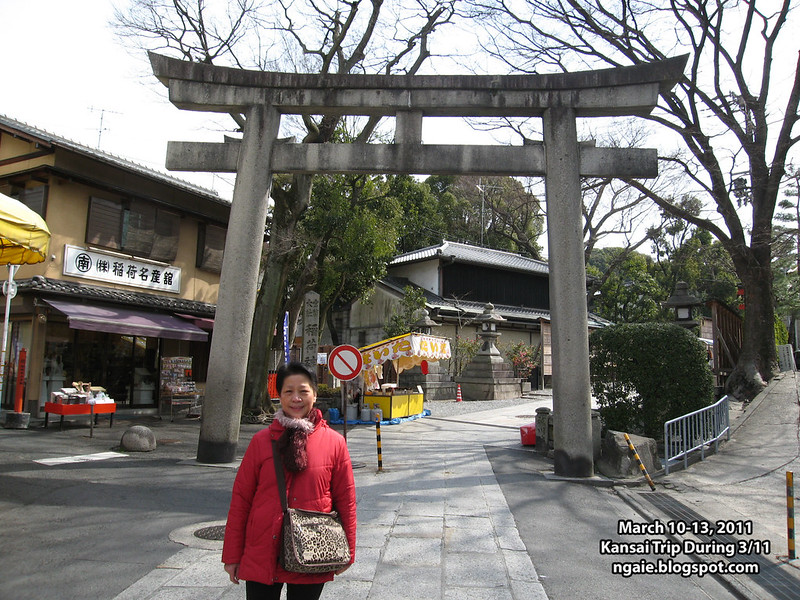
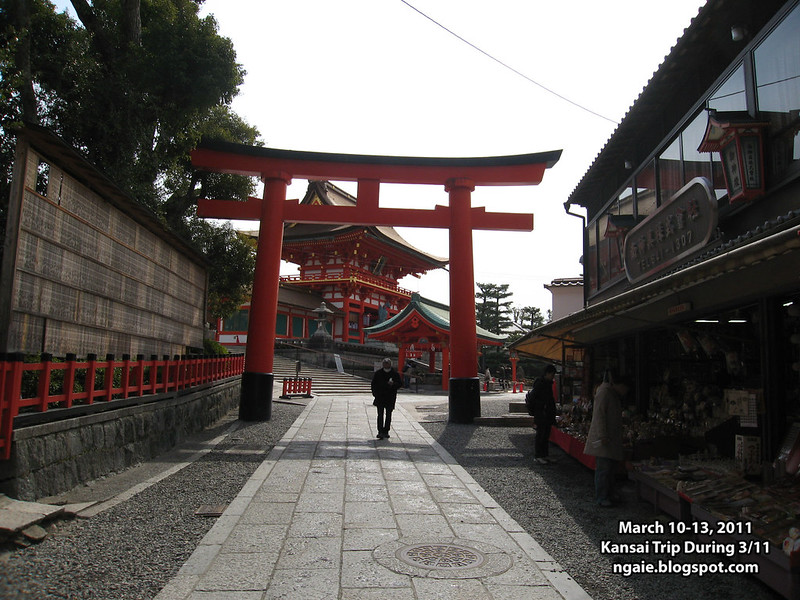
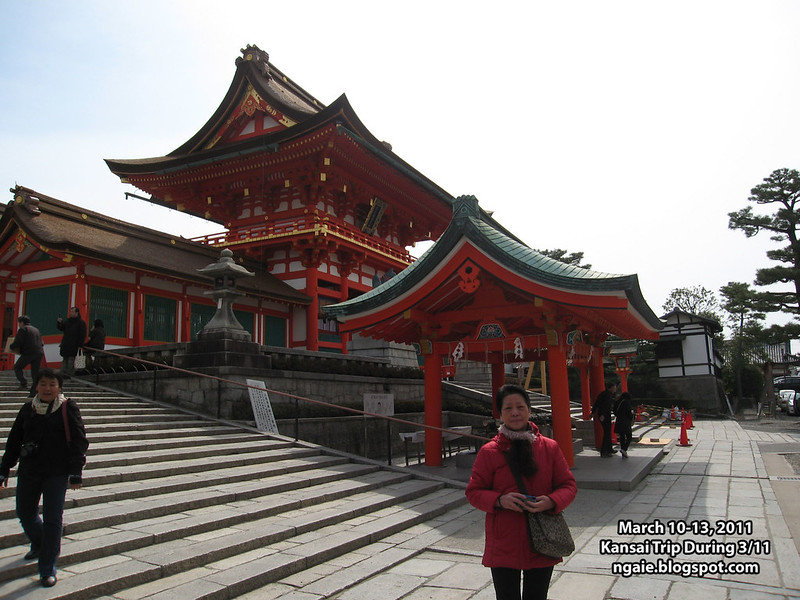


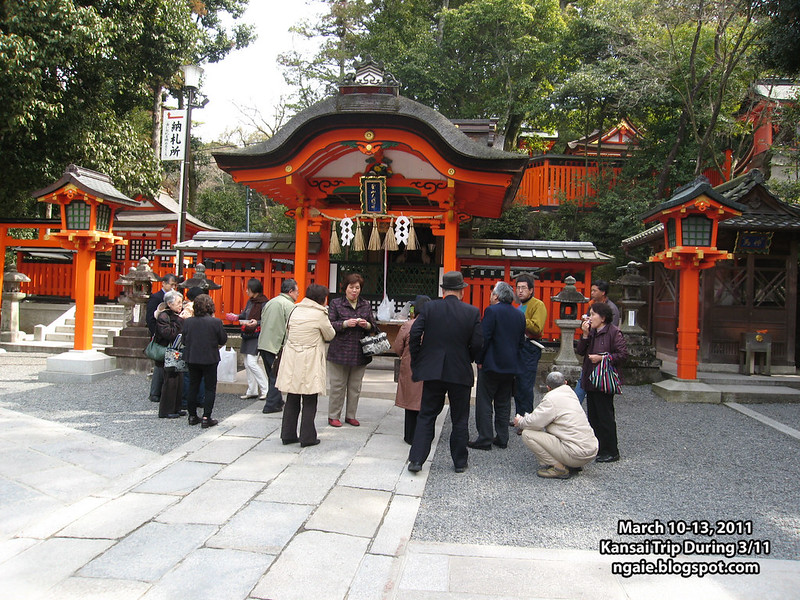

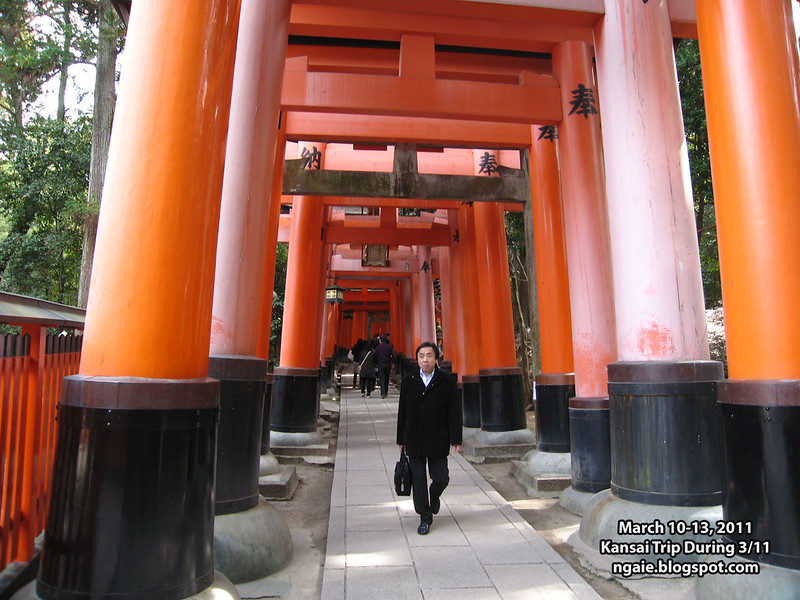




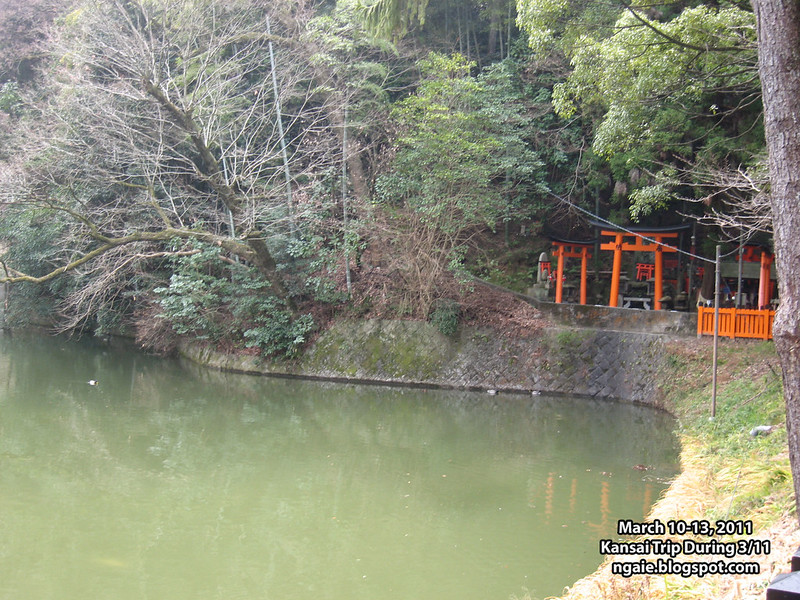
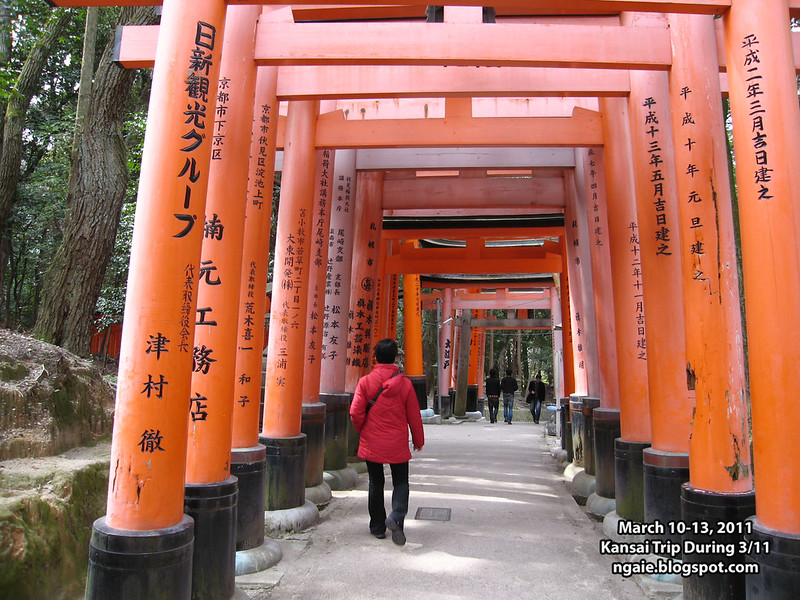
Afterwards, we visited the Kiyomizu Temple (清水寺) in Kyoto, it was not packed but there were a lot of tourists and visitors on that day. By now, in total, I must have visited this temple 3-4 times.
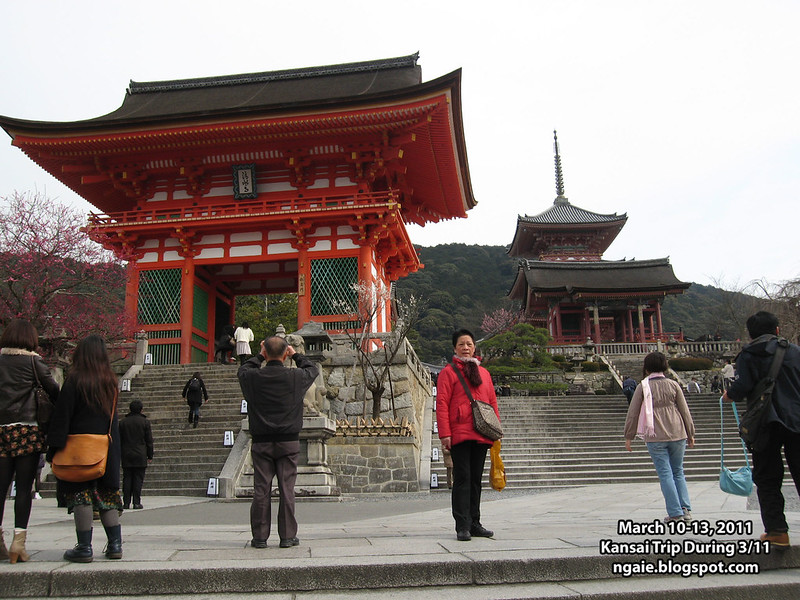
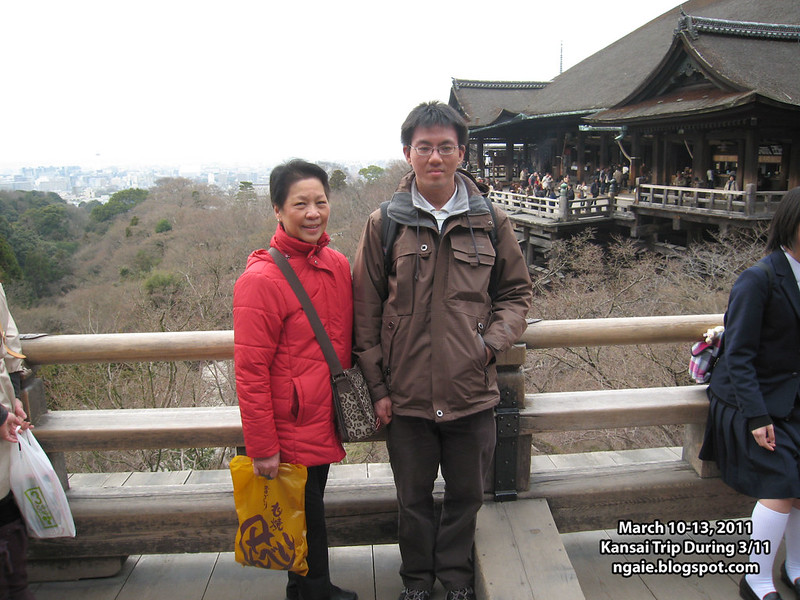
The skyline of Kyoto from the temple.
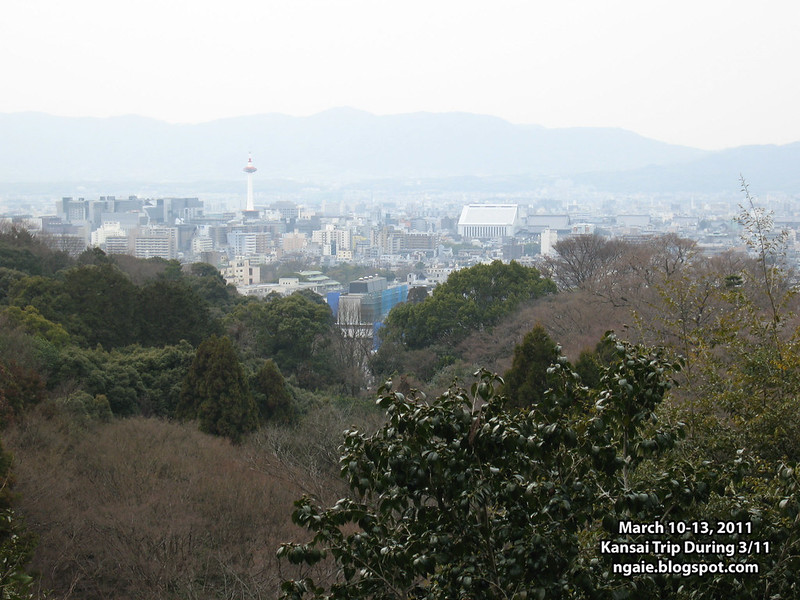
After leaving the Kiyomizu Temple, we spotted some maiko (apprentice geisha), a rare sighting!

The next day on March 13, 2011, we visited Kobe. One of the purposes of visiting Kobe was to eat its famous Kobe beef. We choose to eat it for lunch rather than dinner because it is cheaper at lunch. Although cheaper during lunchtime, 100 g or 150 g costed around 3000-4000 yen.
A blurry shot of our Kobe beef lunch using the ancient iPhone 3GS camera that I had at the time.
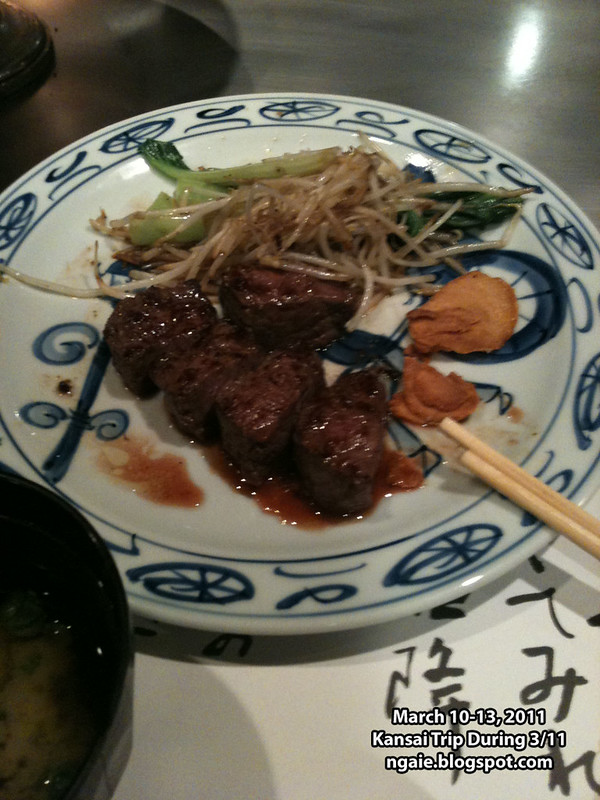
After lunch we explored the tourist areas of Kobe like the Chinatown and the port area.

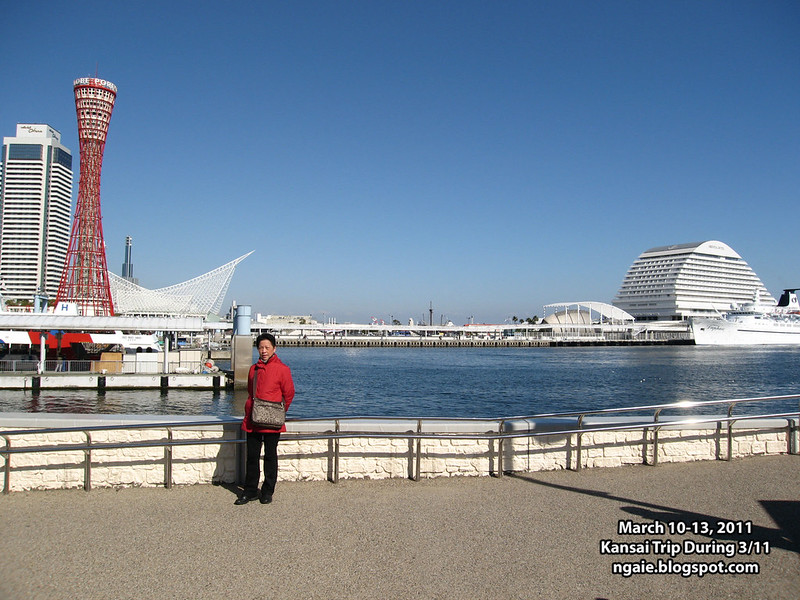
We also tried a Kobe-style "Cream Cheese Cake" and it was actually really good. Although kind of pricey at around 2000 yen (US$20.00).
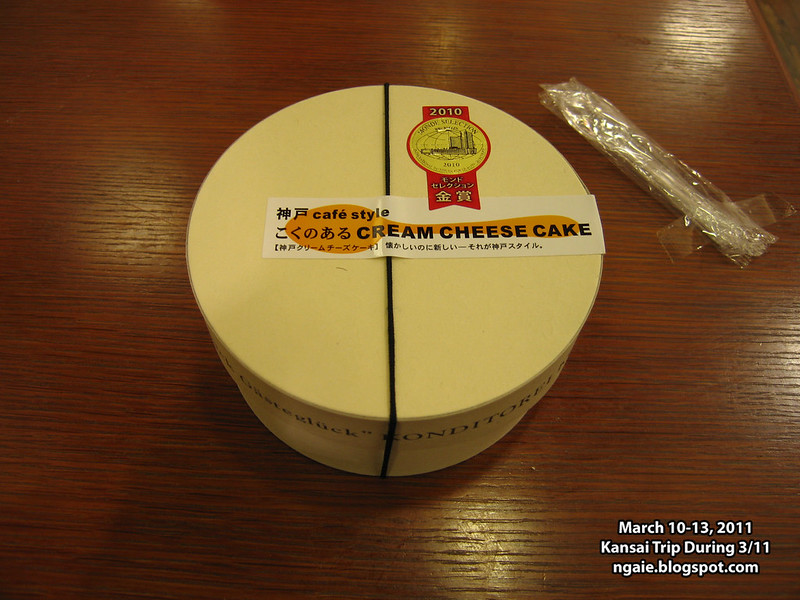
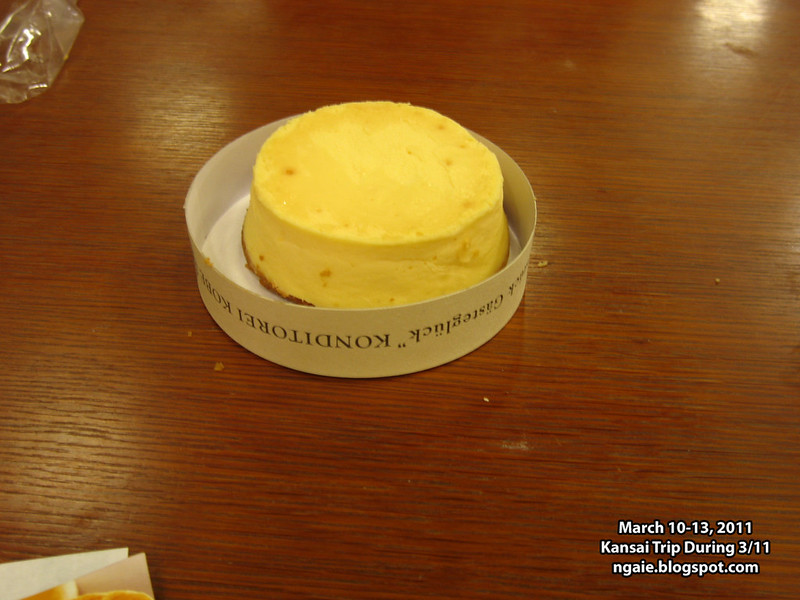
However the real purpose of coming and staying in Kobe was to board a flight to the next portion of our trip to Okinawa which I posted before here. The reason why we had to fly out of Okinawa was because the airline we took that had the cheapest tickets, Skymark Airlines, only flew out of Kobe airport for some reason.
All in all, despite what happened on the other side of Japan during this time, things were quite normal in the rest of Japan.
For those living in Japan at the time, what were you doing when the 3/11 disaster occurred?

0 comments:
Post a Comment